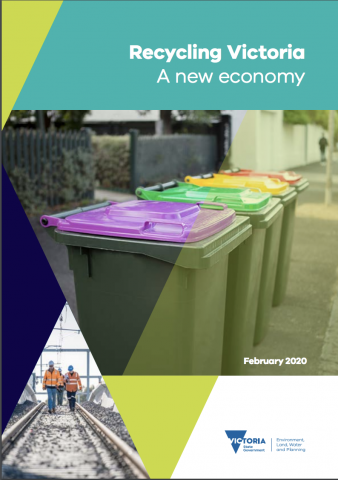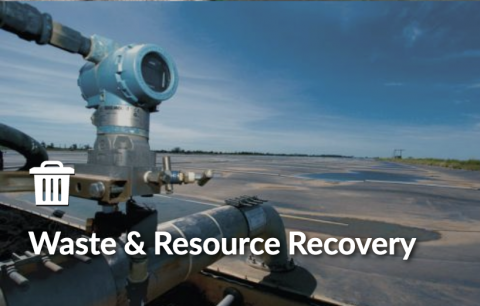
The landmark Recycling Victoria 10-year plan was released by the Victorian Government on 26 February 2020. The new circular economy strategy includes a complete overhaul of Victoria’s recycling sector; 3900 new jobs; the introduction of a four-bin waste and recycling system; and significant investment in a new dedicated data system that will revolutionise the way we collect waste and recycling data.

![]() Recycling Victoria A new economy (1).pdf
Recycling Victoria A new economy (1).pdf
Recycling Victoria is based on four key tenets:
1 MAKE Design to last, repair and recycle.
2 USE Use products to create more value.
3 RECYCLE Recycle more resources.
4 MANAGE Reduce harm from waste and pollution.
The new plan is a major milestone in Victoria’s transition to a circular economy and is fully aligned with the Commissioner for Environmental Sustainability, Dr Gillian Sparkes’ recommendations (13 and 14) in the State of the Environment 2018 Report (SoE 2018) around the need for Victoria, Australia’s fastest growing state, to rethink recycling systems and waste management and transition to a circular economy. “This is an important step away from a ‘take, make, waste’ economy to a more sustainable future and closer alignment with the UN’s Sustainable Development Goals,” says Dr Sparkes.
Victoria’s new four-bin waste and recycling approach is designed to reduce consumption and contamination in kerbside recycling. The kerbside reforms are complemented by a $129 million container deposit scheme and new government investment in industry and infrastructure including a $30 million Recycled Markets Acceleration Package; and $10 million in business support grants to help businesses improve resource efficiency.
Another key area of reform announced in Recycling Victoria centres around illegal dumping and problems associated with hazardous waste.
A dedicated Waste Crime Prevention Inspectorate within the Environmental Protection Authority Victoria (EPA Victoria) will be established with $71.4 million allocated to stop dumping, stockpiling and better manage high-risk waste sites as well as $11.5million for infrastructure to manage hazardous waste to protect the community from hazardous and illegal chemical stockpiles. Minister for Energy, Environment and Climate Change Lily D’Ambrosio says: “For too long, waste crime has undermined Victoria’s recycling sector with dangerous and illegal stockpiling. Our investment will help to clean up the industry and make it fairer for businesses to do the right thing.”

Recycling Victoria acknowledges the need for radical reforms in the way Victoria collects waste and recycling data. “We have good data on total waste generation and municipal waste per capita but the data we have on litter and illegal dumping is poor and on hazardous waste it is only fair,” says Dr Sparkes. More contemporary indicators will be introduced to provide reliable information on waste including the flow of recycled materials; real-time data for regulators and managers; and developing ways to access the power of citizen science for accurate environmental reporting.
From a bigger picture perspective, new data needs to be collected to monitor Victoria’s transition to a circular economy and its alignment to the UN’s Sustainable Development Goals (SDGs). Key findings of the SoE 2018 Waste and Resource Recovery chapter discuss the need for evaluation indicators that monitor the health of the overall system. Dr Sparkes told the Parliamentary Inquiry into Recycling and Waste Management on 6 November 2019 that the SDGs are an important framework to make sense of that. The other tools Dr Sparkes discussed at the Inquiry was the value of access to the Internet of Things (IoT) and digital spatial earth observations to assist with real time data.
Looking ahead, the upcoming Victorian SoE 2023 Report will include an assessment of circular economy indicators for the first time. “Recycling Victoria is a major step forward in Victoria’s shift to a circular economy,” says Dr Sparkes. “The size of the task ahead to transition Victoria to a circular economy can’t be underestimated.”

Quick fact
Did you know that Victoria is one of only two jurisdictions in Australia (the other being the ACT) with an independent Commissioner charged with periodic State of the Environment reporting? Read about Victoria’s Commissioner for Environmental Sustainability.
